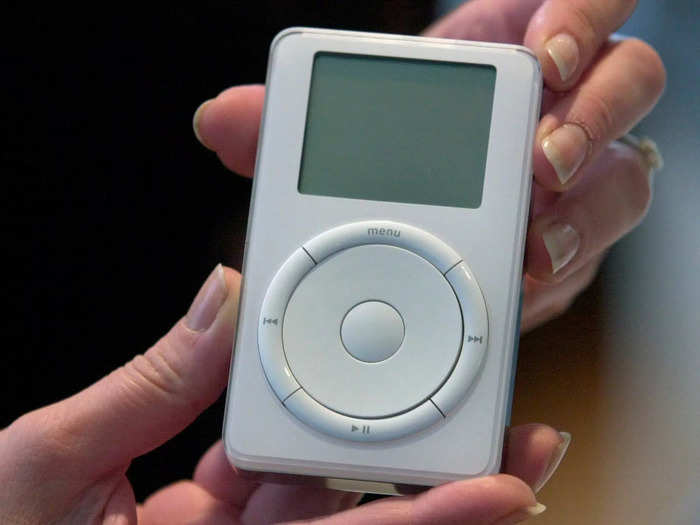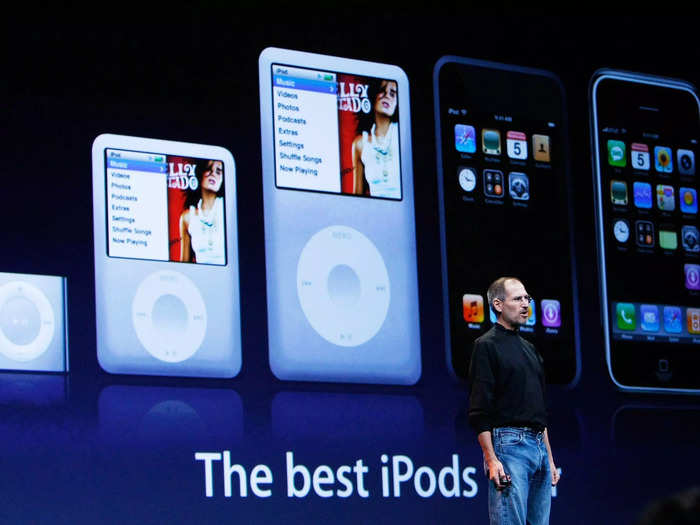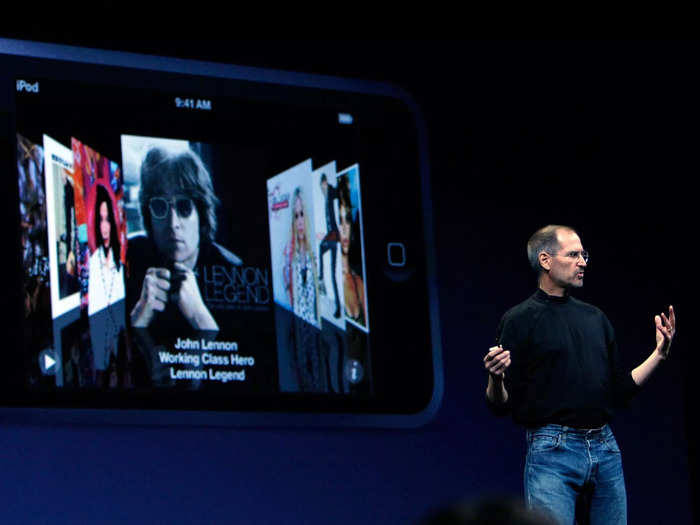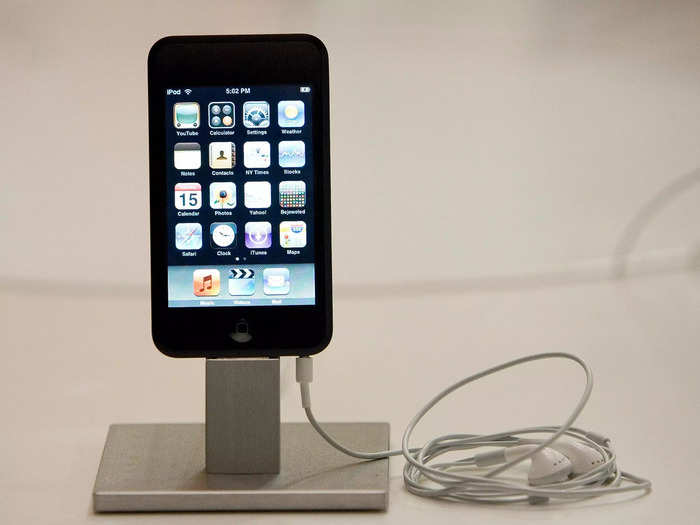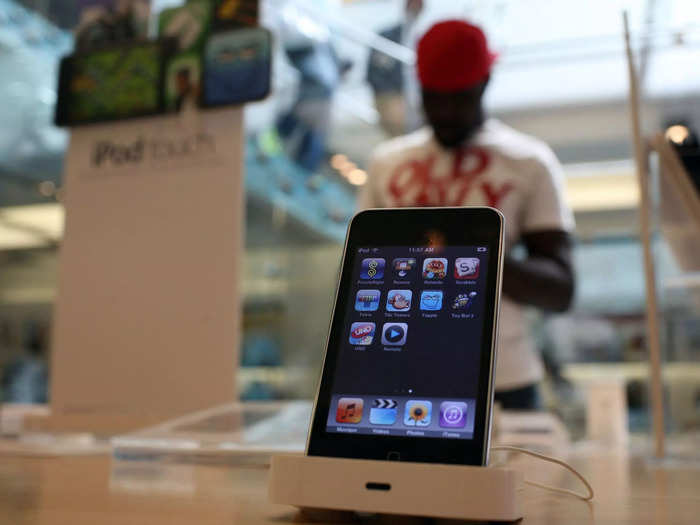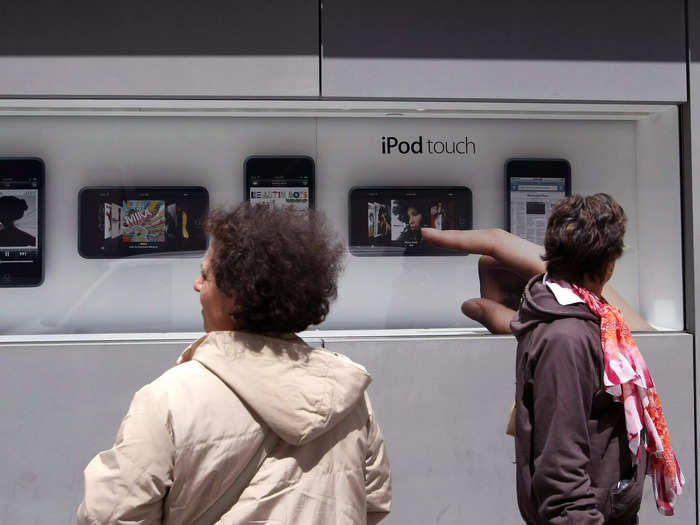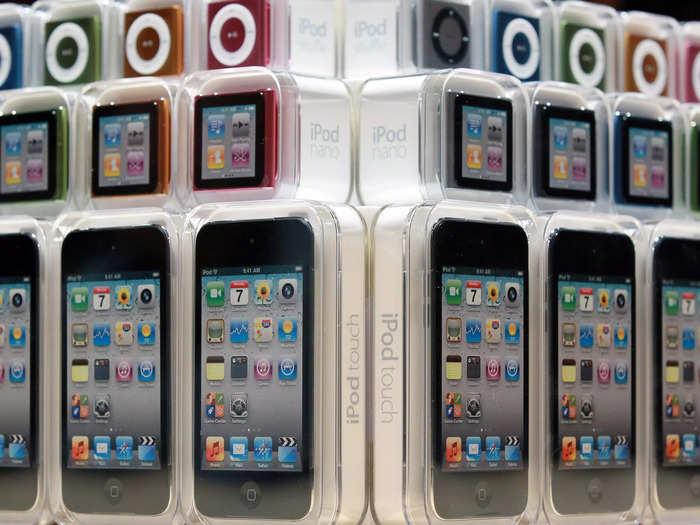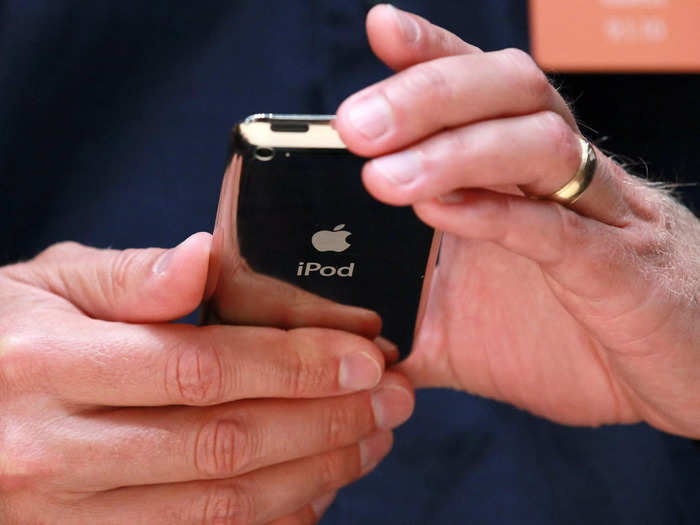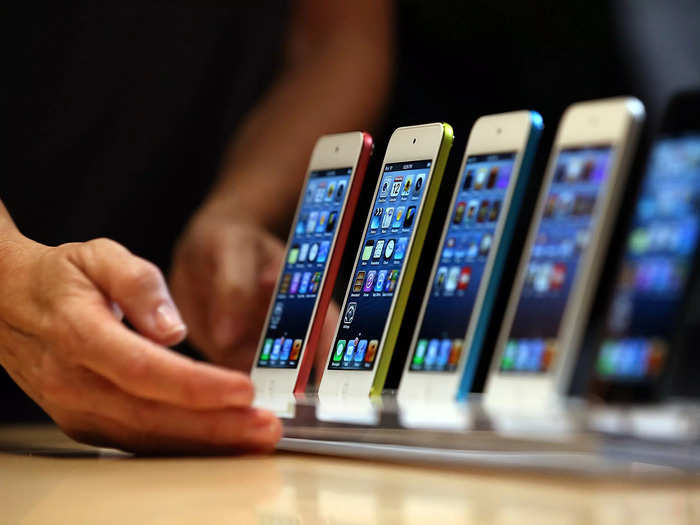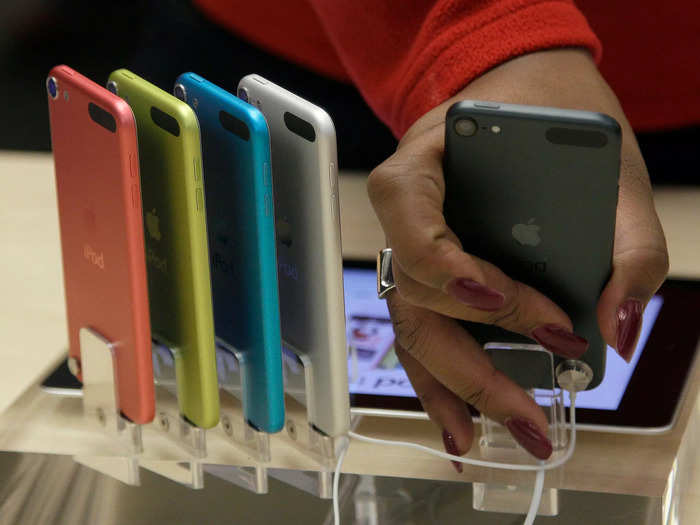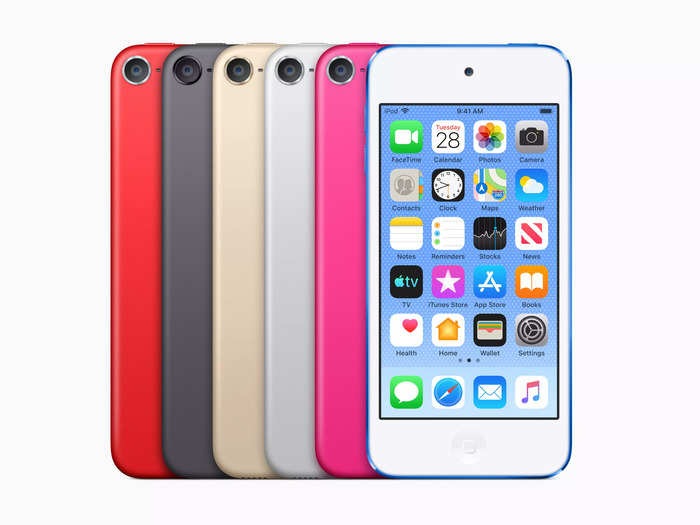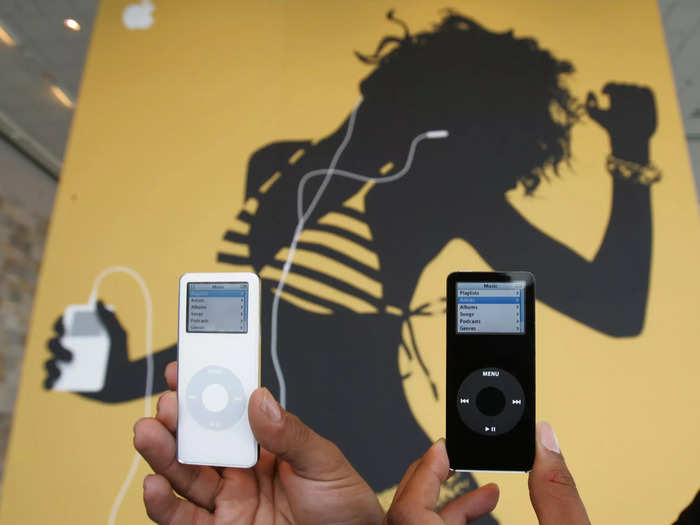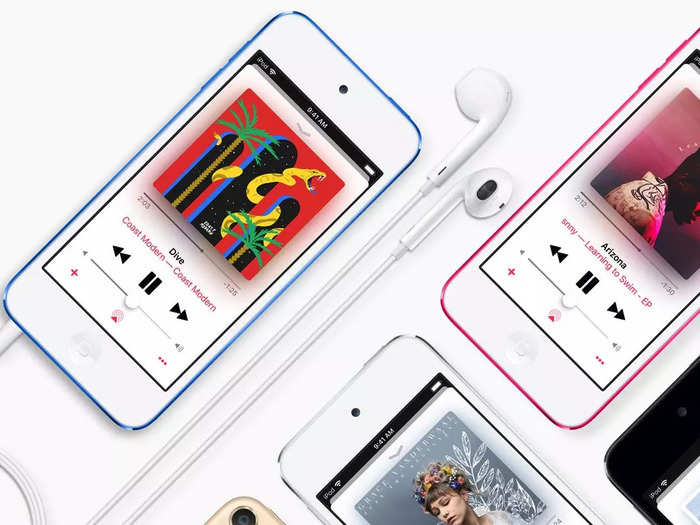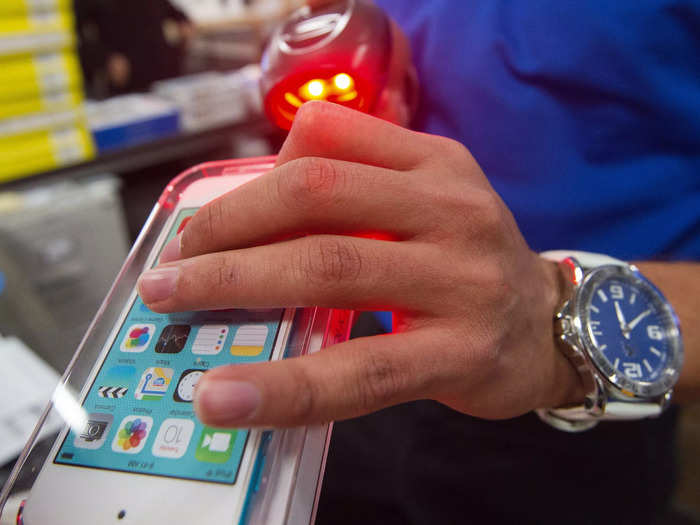Jeff Chiu/AP
- It's the end of an era: Apple announced it will only sell the iPod Touch while supplies last.
- The iPod Touch, introduced in 2007, was the last remaining iPod in Apple's product lineup.
When Apple debuted the first iPod in October 2001, it was met with skepticism from even the brand's most diehard fans — some called it a gimmick, others viewed it as just an overhyped MP3 player.
Julie Jacobson/AP
But fast-forward a few years and the iPod became a cultural force and a status symbol, altering the music industry as we knew it. Apple launched other models, including the Mini, Shuffle, and Nano. By 2006, iPod sales accounted for roughly 40% of Apple's revenue.
Apple CEO Steve Jobs shows off the new iPod array in September 2007. Justin Sullivan/Getty Images
In September 2007, Apple CEO Steve Jobs launched the newest addition to the company's product lineup: the iPod Touch.
Apple CEO Steve Jobs introduces the iPod Touch during an Apple event in September 2007 in San Francisco, California. Justin Sullivan/Getty Images
Jobs touted the device's "unbelievable" thinness and built-in Wi-Fi. The iPod Touch also had the same 3.5-inch touchscreen display as the brand-new iPhone, which had debuted in June of that year, meaning it could run apps and games. The first iPod Touch retailed for $300.
The iPod touch on display at the 2008 Macworld conference in San Francisco. David Paul Morris/Getty Images
"The iPod touch is a landmark iPod," Jobs said at the time.
Cate Gillon/Getty Images
An upgraded iPod Touch debuted a year later. The new device was slimmer and lighter, and could access the App Store — Apple called it "the funnest iPod we've ever created."
The iPod Touch on display at an Apple store in April 2009. Justin Sullivan/Getty Images
By 2008, iPod sales were on fire: Apple sold 54.8 million units that year, a peak for the company.
Pedestrians walk by an Apple iPod Touch window display at a San Francisco Apple store in April 2008. Justin Sullivan/Getty Images
But by the following year, iPod sales as a whole had started to slow. Apple's then-CFO Peter Oppenheimer said that that was expected as "we cannibalize ourselves with the iPod Touch and the iPhone."
The full array of iPods on display in 2010. Justin Sullivan/Getty Images
When Apple added front- and rear-facing cameras to the iPod Touch in 2010, the line between the iPod Touch and iPhone blurred even further. A year later, iPhone sales officially eclipsed iPod sales.
Justin Sullivan/Getty Images
Still, by 2012, Apple had sold 350 million units and refreshed the design of its iPod lineup, including the iPod Touch.
The iPod Touch is displayed during an Apple event in 2012. Justin Sullivan/Getty Images
For the first time, the iPod Touch was offered in five colors, including blue, yellow, and pink. Apple also added its smart assistant, Siri; upgraded the camera and display; and made the device thinner and lighter than ever.
Jeff Chiu/AP
While the iPod Touch has gotten some upgrades since then — most recently in 2019 — the design has remained mostly unchanged over the last decade.
The iPod touch (7th generation) launched in May 2019. Courtesy of Apple.
Meanwhile, Apple has slowly killed off older versions of the iPod. The iPod Classic was discontinued in 2014, and the Nano and Shuffle were sunsetted in 2017.
Paul Sakuma/AP
But the iPod Touch hung on. Unlike its forebears, it was an iOS device, which meant it could connect to Apple's services, like Apple Music, Apple Podcasts, and Apple TV Plus. Apple has made those services a main focus over the past few years, even replacing its industry-changing music library, iTunes, with its new streaming platforms.
Apple
But the iPod Touch's similarities to the iPhone also made it redundant and now, it's about to become a piece of technology history. Apple said customers will only be able to purchase the iPod Touch, the last remaining iPod, while supplies last.
A salesperson scans an iPod Touch at a Best Buy store on Black Friday. PAUL J. RICHARDS/AFP via Getty Images

